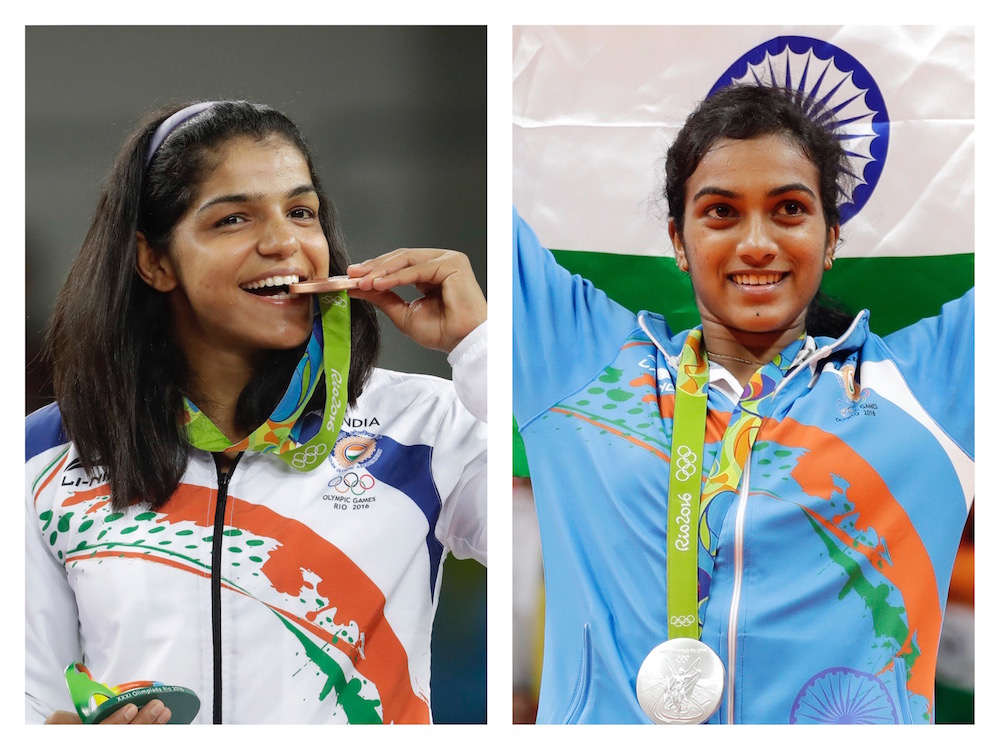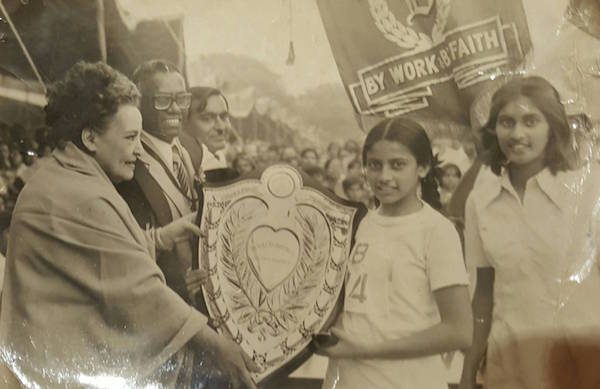
It’s been nearly 10 years since my father died, but watching Indian athletes at the Rio Olympics has brought his memory rushing back to me.
When I was a child, the kids in my New Delhi school called my father kallu or “blackie”—he was a very dark skinned Indian man, and he also happened to be the principal of the school. Kids will always find a mean moniker for their school principals, no matter how revered and popular they might be.
But something changed in 1984, when the Olympics were broadcast in color in a country where the middle-class was only recently able to afford color TVs … they started to call him Carl Lewis. The dominant American track star reminded people of my father, who loved sports. The same dark, lean body, the same long strides.
When it came to sports, my father’s appearance wasn’t the only thing that made him stand out. He was a pioneer in encouraging Indian girls to be sporty.
In a break from tradition, the school he led for several decades always had girls’ teams for every sport played by boys. He insisted that my two sisters and I take up a sport and strenuously cross train. He showed us how to burst out of the blocks as a sprinter, how to throw a javelin, how to take the turn in a 400-meter race. We played field hockey and basketball through to junior nationals level. Thanks to his rigor, we always had more stamina than anyone else on our teams.

The author’s sister, Karen Mayer, receiving the best all-round athlete award with their father (in glasses) looking on. Circa 1980.
As part of our training, he would take us running after class. In 1984, inspired by the Olympians we eagerly watched on TV, we sported “dolphin” shorts similar to those we saw on Team USA.
The school was located in the midst of a densely packed block of houses and apartments. Parents watching from their rooftops saw their local school principal and his daughters running laps, and soon some thought it safe to let their own daughters run along with us. As track & field became popular, my father insisted that girls compete in proper athletic attire and not in salwar kameez, the tunics and pants that are an Indian woman’s de facto uniform.
I don’t know what went through my father’s mind when he looked at his three daughters. He himself was born in a slum in Calcutta. Math and science were his ticket out of poverty via a Fulbright Scholarship. Spending several years living as a graduate student in Texas and Vermont no doubt shaped his views on girls’ education and sports. When presented with the opportunity to immigrate to the United States, he chose to return to India because he felt he would have a greater impact on education in his homeland.
Was he a women’s rights advocate from the outset? Or did he simply not see it being a big deal that his girls followed him into a love for athletics? He certainly didn’t bring us up as boys; he just never let us question whether there were things we could not do because we were girls.
India is a country of 1.3 billion people—with a notoriously poor Olympic performance. Though it didn’t manage to rank among the top 50 Olympic medal-winning nations in Rio, it did send its largest-ever contingent of athletes—113.
Granted, several sports that Indians compete in don’t make it to prime time on NBC, like badminton, field hockey, shooting, and judo. But this year was different because Team India included world-class athletes in gymnastics, golf, boxing, tennis, and even track & field. Among them was Aditi Ashok, 18, the lone Indian golfer and the youngest female golfer in Rio; she attended the public school where my father was principal three decades ago and set up the sports programs, still today bearing fruit.
I lived in India long enough to know that there is little sports infrastructure. Stadiums and swim arenas built for the 1982 Asian Games were decaying relics where we’d go as teenagers to skip classes and while away hot summer days. And now I have lived outside of India long enough to see that something has changed. The 2010 Commonwealth Games, held in Delhi, drew large crowds. Indians started to be interested in sports other than cricket and to take pride in the home team, with private-sector support for athletes becoming more accessible.
In addition, the global spotlight on horrific crimes committed against women in India is leading to a seismic change in attitudes towards female sports. A girl does not need to be protected—she needs to be aware of her own strength.
India has an incredibly lopsided gender makeup, with census results showing between 8 and 10 million girls missing from the population, mostly due to sex selection and female infanticide. Sakshi Malik, who won bronze in wrestling in Rio, is from the state of Harayana, where an estimated 35,000 girls are killed every year. Dipa Karmakar, the lone female gymnast representing the country (she ranked 4th in vault), trained on equipment fashioned out of scrap motor scooter parts in her mountainous state of Assam, known more for producing tea than gymnasts.
My hope is that these athlete-warriors will inspire an army of sporty girls in India. There is already a movement afoot to save India’s daughters—beti bachao (save girls). Of course girls in India, just like any person anywhere, do not need to be sporty in order to justify their value. What these victories do, by putting Indian girls and women in the spotlight, is make it harder to ignore this problem, harder to permit it to continue. So yes, as social media has resoundingly declared, beti bachao, medal pao. (Save girls, win medals.)
Girls in India are discouraged from sports because they would need to wear “revealing” clothes and their bodies would be “on display.” My friend, a banker whose father was posted to remote villages as a government official, told me that there are places where parents of three children will say they only have 1 son, because their two daughters don’t count. Though I always valued my father’s encouragement, now more than ever I appreciate that he pushed me away from the sari and into track pants.




Send A Letter To the Editors